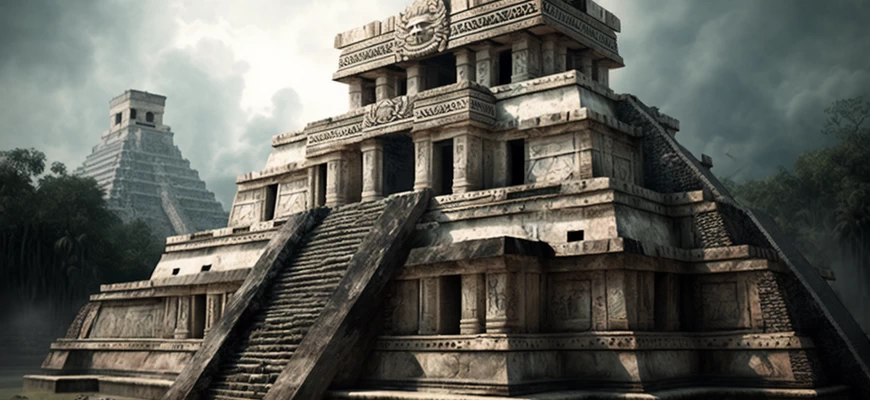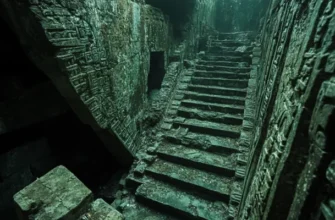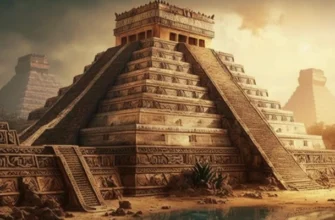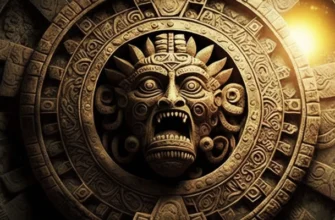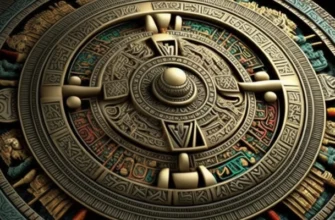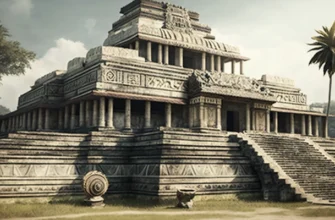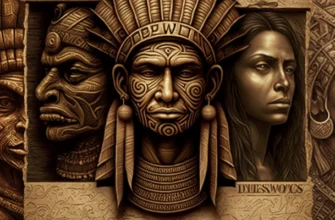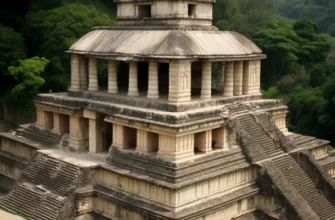Mayan architecture is based on the use of natural materials and exquisite ornaments. Pyramids, temples, and palace complexes became known for their complex geometry and relief decor. Construction was based on the use of stone, wood, and clay. The technologies of Mayan architecture, such as the ability to perform precise calculations and knowledge of astronomy, allowed them to build amazing structures that remain amazing to our world to this day. The Mayan architectural heritage is an important element of world culture.
Historical overview of Mayan architecture
Mayan architecture began over 2000 years ago and lasted until the Spanish conquest in the 16th century. This architecture reflected the Mayan culture and religious beliefs, as well as their knowledge of mathematics and astronomy. Mayan architecture was extensive and had a huge scope, including pyramids, palace complexes, urban centers, and much more. This architecture was built using natural materials such as stone, wood, and clay and reflected the Maya’s deep knowledge and skills in construction. Some of the most famous Mayan architectural structures are now tourist attractions in Mexico, Belize, and Guatemala.
Styles and characteristics of Mayan architecture
Mayan architecture encompasses various styles that developed over thousands of years and were associated with Mayan culture and religion. One of the most well-known styles is the “Classic Period” (250-900 AD), characterized by large pyramids with relief decor and temples that include rooms for religious rites. The other style, known as the “Postclassical period” (900-1521 AD), is characterized by more complex geometry and elaborate ornamentation, including temporary buildings from urban centers and some of the most magnificent Maya pyramids.
The characteristics of Mayan architecture are precision of calculations, use of natural materials, relief decor, and the ability to make astronomical observations. Mayan architecture also often included complex water pipes, sewers, and water storage systems, which indicates their knowledge of hydraulic engineering. All of these features of Maya architecture reflect the importance of buildings for religious and social ceremonies, as well as their knowledge and technical abilities.
Architecture of pyramids and temples
The Mayan pyramids and temples are impressive architectural structures that reflect the deep religious beliefs of the civilization. The Mayan pyramids are up to 60 meters high and consist of step-like platforms that are located on top of each other. The temples are located on the top platform and are decorated with brave reliefs and statues representing various Mayan deities. It is believed that these structures were used for religious rituals, including sacrifices and communication with the gods.
Mayan temples are usually square in shape and consist of a set of rooms decorated with symbols and reliefs. The most famous of the temples is Kukulkan in Chichen Itza, which is shaped like a pyramid and decorated with colorful reliefs representing the sun, moon, and snake. This temple was an important center of Mayan religious rituals and still attracts a large number of tourists from all over the world.
The characteristic features of the architecture of Mayan pyramids and temples are relief decorations, sculptures, and symmetrical shapes. They were also associated with Mayan astronomical and cosmological beliefs, which emphasizes their importance in the religious and social spheres of life.
Urban centers and palace complexes
The Maya created impressive urban centers and palace complexes that testify to the flourishing of their civilization. The urban centers included pyramids, temples, and palace complexes that were connected by a network of roads and canals.
Mayan palace complexes consisted of a series of square or rectangular stone buildings that had open courtyards and patios. These complexes were decorated with reliefs and sculptures of animals and gods, and had a complex water supply and sewage system.
The most famous Mayan urban centers are Chichen Itza, Palenque, Tikal, and Uxmal. In these cities, you can see impressive structures such as pyramids, temples, and palace complexes decorated with reliefs and sculptures. For example, the Palenque palace complex consists of more than 200 buildings, including temples, pyramids, and courtyards, which are an example of complex and sophisticated Mayan architecture.
All of these Mayan urban centers and palace complexes testify to the grandeur and luxury of a civilization that placed great importance on architecture and art.
Construction technologies
The Maya used a variety of technologies and materials to build their great urban centers and palaces. One of the main technologies was the use of large stone blocks to create large structures such as pyramids and temples.
The Maya were skilled at working stone, carving it into various shapes and sizes to create complex architectural elements such as pillars and arches. In addition to stone, the Maya used other materials such as wood, clay, and straw to create the walls and roofs of their buildings.
Mayan construction used engineering solutions such as canals to provide water supply and sewage, as well as terraces and walkways to combat soil erosion and create a flat surface for construction.
The technologies and materials used by the Maya allowed them to create large and impressive buildings that are a testament to the high level of development of this ancient civilization.
Cultural heritage of Mayan architecture
Mayan architecture is an important part of the cultural heritage of this ancient civilization. Its complexity and diversity make it fascinating and interesting to explore to this day.
The great pyramids and temples, the elaborate frescoes and reliefs, the beautifully sculpted stone statues, and the impressive urban centers and palace complexes that have survived to this day, show that Mayan architecture has a huge cultural and historical icon.
For many people, visiting Mexico and Central America has become an unforgettable experience thanks to viewing and studying Mayan architectural monuments, which allows them to experience the richness of the culture and traditions of ancient peoples and our world as a whole.
Modern research on Mayan architecture
Modern research on Mayan architecture helps to better understand this ancient civilization and its creations. Archaeological excavations, the use of modern technologies, and the analysis of material samples allow us to uncover more and more details about Mayan architectural achievements.
For example, the use of laser scanning and 3D modeling has made it possible to preserve exact copies of Mayan pyramids and temples, allowing them to be studied without the risk of damage or wear. Chemical analysis also helps to determine the composition of the materials from which the structures were built, and the analysis of deep layers allows us to establish the dates of construction and determine the stages of civilization development.
Modern research on Mayan architecture also contributes to the preservation of this cultural heritage for future generations. Research, conservation, and restoration of Mayan architectural monuments is an important task in preserving this unique cultural heritage.
Conclusions
Mayan architecture is unique and impressive for its beauty and complexity. A high level of development and the use of high-tech methods allowed the Maya to create impressive structures such as pyramids, temples, and palace complexes.
The styles and characteristics of Mayan architecture reflect their culture and religion. Many of the Mayan architectural structures were associated with rituals and ceremonies, and played an important role in the everyday life of the civilization.
Modern research on Mayan architecture helps to better understand their civilization and creations. The application of the latest technologies and methods allows us to reveal more and more about the Mayan architectural achievements, and also contributes to the preservation of this unique cultural heritage for future generations.
